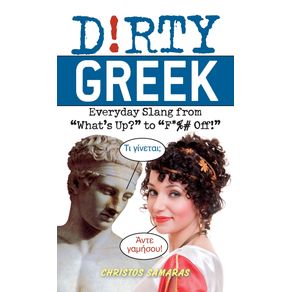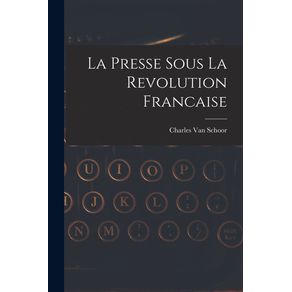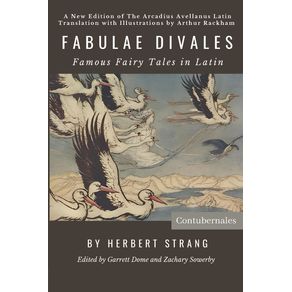| Selo | Crescent Moon Publishing |
|---|---|
| Edição | 0 |
| Idioma | Inglês |
| Autores | Oliver Whitehorne |
| Acabamento | Capa Dura |
| Quantidade de Páginas | 168 |
| Origem | Literatura Estrangeira |
 Da floresta - Vivências da ayahuasca na cidade
Da floresta - Vivências da ayahuasca na cidade
Telha
R$ 52,00 à vista Da prensa ao jornalismo ambiental
Da prensa ao jornalismo ambiental
Editora Viseu
R$ 44,90 à vista Trânsito de fiéis: Internet, a nova estrada da fé
Trânsito de fiéis: Internet, a nova estrada da fé
Editora Viseu
R$ 51,90 à vista Sorrisos Amarelos: Histórias de jovens mulheres orientais no Brasil
Sorrisos Amarelos: Histórias de jovens mulheres orientais no Brasil
Editora Viseu
R$ 32,90 à vista Hortênsia azul
Hortênsia azul
Editora Viseu
R$ 35,90 à vista Million Dollar Outlines
Million Dollar Outlines
WordFire Press LLC
R$ 139,62 ou até 2x sem juros Orlando Innamorato
Orlando Innamorato
Legare Street Press
R$ 182,37 ou até 3x sem juros Learn to Read in Japanese, Volume IV
Learn to Read in Japanese, Volume IV
Roger Lake
R$ 176,83 ou até 3x sem juros Gramática Árabe
Gramática Árabe
Legare Street Press
R$ 150,17 ou até 3x sem juros Vocabolario Italiano-latino ...
Vocabolario Italiano-latino ...
Legare Street Press
R$ 237,50 ou até 3x sem juros Dirty Greek
Dirty Greek
Bookpack Inc
R$ 111,12 ou até 2x sem juros Двойник
Двойник
IndoEuropeanPublishing
R$ 227,90 ou até 3x sem juros English Collocations in Context
English Collocations in Context
Prosperity Education
R$ 168,15 ou até 3x sem juros Listening C2
Listening C2
Prosperity Education
R$ 127,05 ou até 2x sem juros Excerptiones de Prisciano
Excerptiones de Prisciano
Boydell & Brewer Ltd
R$ 1.263,37 ou até 3x sem juros O meu é mais barato vs Você quer ir para o céu?
O meu é mais barato vs Você quer ir para o céu?
Editora Viseu
R$ 44,90 à vista Tudo muda; Histórias de imigrantes venezuelanos no Brasil
Tudo muda; Histórias de imigrantes venezuelanos no Brasil
Editora Viseu
R$ 41,90 à vista Trânsito de fiéis: Internet, a nova estrada da fé
Trânsito de fiéis: Internet, a nova estrada da fé
Editora Viseu
R$ 51,90 à vista Sorrisos Amarelos: Histórias de jovens mulheres orientais no Brasil
Sorrisos Amarelos: Histórias de jovens mulheres orientais no Brasil
Editora Viseu
R$ 32,90 à vista Hortênsia azul
Hortênsia azul
Editora Viseu
R$ 35,90 à vista APRENDER ESPANHOL SE DIVERTINDO! - PARA PRINCIPIANTES
APRENDER ESPANHOL SE DIVERTINDO! - PARA PRINCIPIANTES
LearnX
R$ 102,23 ou até 2x sem juros Guia Para Los Españoles Hablar Papiamento Y Viceversa
Guia Para Los Españoles Hablar Papiamento Y Viceversa
Legare Street Press
R$ 207,34 ou até 3x sem juros The Key to All Joyo Kanji
The Key to All Joyo Kanji
Indy Pub
R$ 301,12 ou até 3x sem juros Learn to Read in Japanese, Volume IV
Learn to Read in Japanese, Volume IV
Roger Lake
R$ 176,83 ou até 3x sem juros La Presse Sous La Revolution Francaise
La Presse Sous La Revolution Francaise
Legare Street Press
R$ 152,29 ou até 3x sem juros Двойник
Двойник
IndoEuropeanPublishing
R$ 227,90 ou até 3x sem juros Syntactic Structures
Syntactic Structures
Martino Fine Books
R$ 129,55 ou até 2x sem juros Easy Japanese Phrase Book
Easy Japanese Phrase Book
Talk in French
R$ 131,83 ou até 2x sem juros Ukrainian Handwriting Book
Ukrainian Handwriting Book
Lulu Press
R$ 158,89 ou até 3x sem juros Excerptiones de Prisciano
Excerptiones de Prisciano
Boydell & Brewer Ltd
R$ 1.263,37 ou até 3x sem juros Da floresta - Vivências da ayahuasca na cidade
Da floresta - Vivências da ayahuasca na cidade
Telha
R$ 52,00 à vista O meu é mais barato vs Você quer ir para o céu?
O meu é mais barato vs Você quer ir para o céu?
Editora Viseu
R$ 44,90 à vista Hortênsia azul
Hortênsia azul
Editora Viseu
R$ 35,90 à vista APRENDER ESPANHOL SE DIVERTINDO! - PARA PRINCIPIANTES
APRENDER ESPANHOL SE DIVERTINDO! - PARA PRINCIPIANTES
LearnX
R$ 102,23 ou até 2x sem juros Fabulae Divales
Fabulae Divales
Contubernales
R$ 124,83 ou até 2x sem juros Guia Para Los Españoles Hablar Papiamento Y Viceversa
Guia Para Los Españoles Hablar Papiamento Y Viceversa
Legare Street Press
R$ 207,34 ou até 3x sem juros Orlando Innamorato
Orlando Innamorato
Legare Street Press
R$ 182,37 ou até 3x sem juros Gramática Árabe
Gramática Árabe
Legare Street Press
R$ 150,17 ou até 3x sem juros Двойник
Двойник
IndoEuropeanPublishing
R$ 227,90 ou até 3x sem juros Conversational Korean Grammar
Conversational Korean Grammar
Gooseapple Books, LLC
R$ 208,76 ou até 3x sem juros English Collocations in Context
English Collocations in Context
Prosperity Education
R$ 168,15 ou até 3x sem juros The Meaning of Meaning
The Meaning of Meaning
Martino Fine Books
R$ 146,28 ou até 2x sem juros Sherlock Holmes and a Scandal in Shanghai
Sherlock Holmes and a Scandal in Shanghai
Mind Spark Press LLC
R$ 114,37 ou até 2x sem juros Reading Tolstoys The Death of Ivan Ilyich in Russian
Reading Tolstoys The Death of Ivan Ilyich in Russian
Indy Pub
R$ 147,47 ou até 2x sem juros Easy Japanese Phrase Book
Easy Japanese Phrase Book
Talk in French
R$ 131,83 ou até 2x sem juros